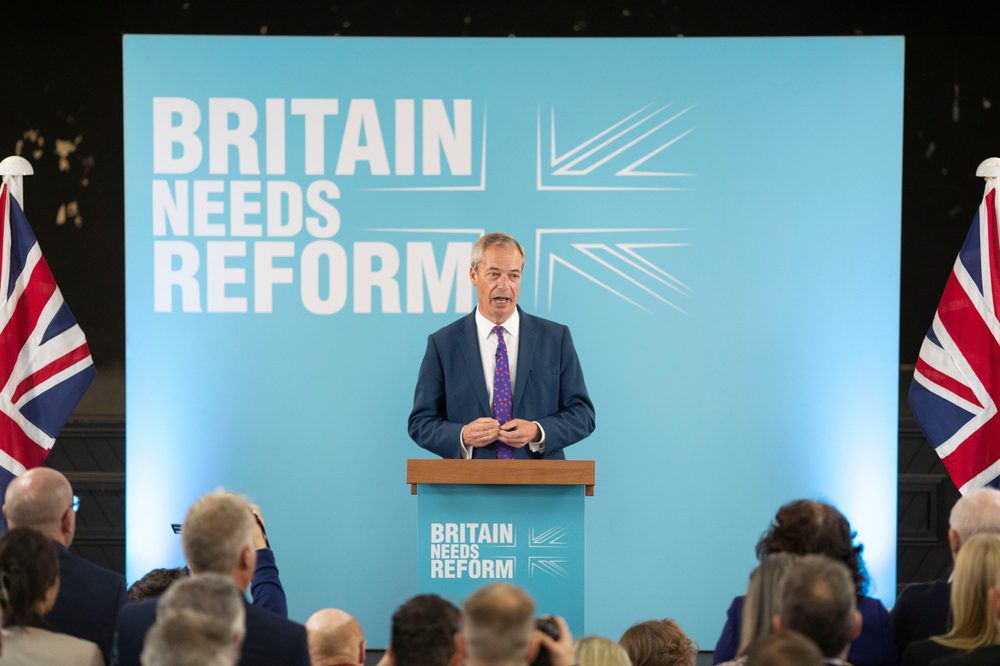There’s been a great deal of discussion about young voters—especially young men—shifting towards the populist right in Western democracies.
We’ve seen this trend in the U.S., France, Germany, Poland, and Portugal, among other nations. But is the same movement happening in Britain?
On the surface, Reform UK is currently polling at about 29 per cent nationally, leading all other parties and starting a shock race for leadership, but the overall numbers don’t tell the full story.
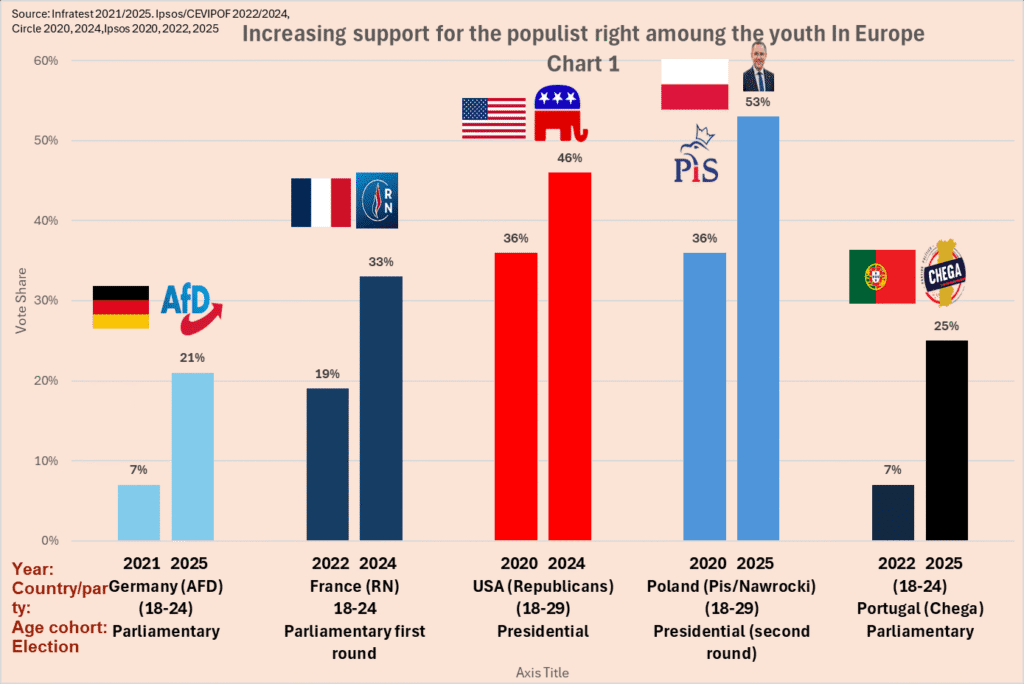
At first glance, the UK seems to follow the European and American trend. Reform UK now polls around 17 per cent among 18–24-year-olds, roughly double the highest youth support its predecessors (UKIP and the Brexit Party) ever achieved, at around 8–9 per cent. But this rise isn’t just about young voters; Reform is gaining across all age groups.
This more-than-doubling of youth support raises some key questions:
• Is the rise in youth support truly exceptional?
• What explains this increase?
• How does it compare to similar trends across Europe?
• Is there a more significant political trend amongst young voters?

Is Reform’s youth surge really exceptional?
At first glance, no. If you look at 2015 and 2024, the numbers suggest this rise is just part of a broader rise in support.
The populist right’s “youth relative performance” (youth vote share divided by overall share) is not unprecedented: UKIP had a youth relative performance score of about 62 per cent in the 2015 election, and Reform achieved 57 per cent at the 2024 election.
Thus Reforms’ current score of 59 per cent implies that the party’s rise in youth support is insignificant.
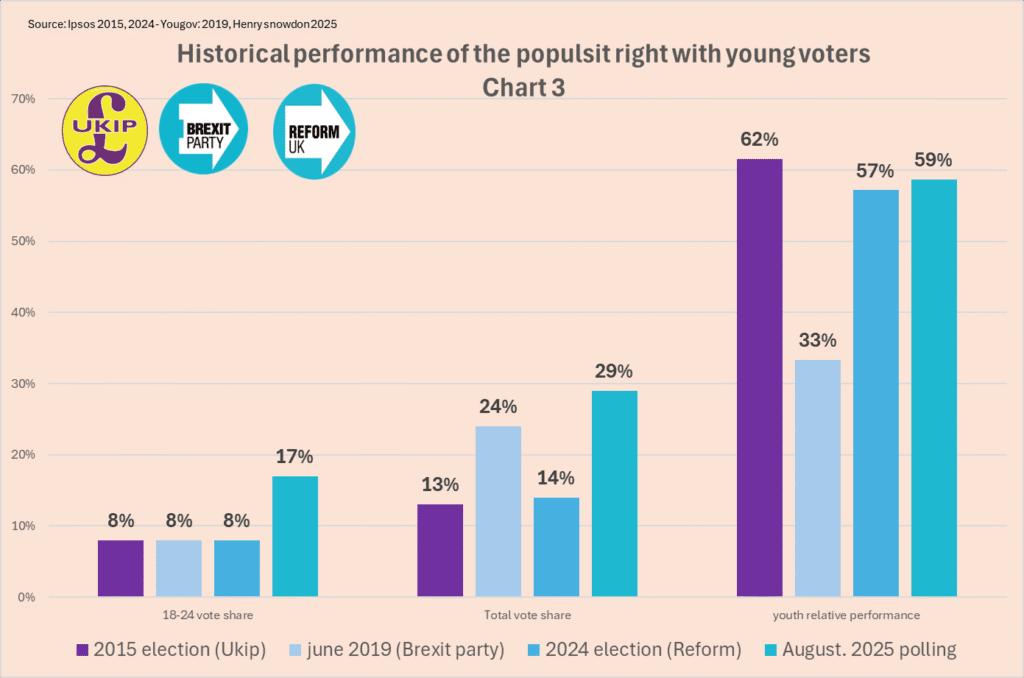
But here’s the twist: Compare it to the Brexit Party’s polling zenith after Theresa May resigned. They hit a new all- time polling high of 24 per cent overall – yet just 8 per cent among young voters. That’s a relative score of 33 per cent. By that standard, Reform’s current youth numbers look remarkable and unprecedented.
So, is this youth wave a big deal, and perhaps a sign of future movement in the future? The 2015 and 2024 elections say no, but the Brexit Party’s polling peak says yes. Either way, Reform’s performance with young voters is not insignificant.
How does Britain compare to other democracies?
This trend looks very different from what we’ve seen elsewhere in the democratic world. We know youth support for the populist right has grown in Britain—but how does it stack up internationally? The answer is mixed.
Not every country has seen a populist right surge. In countries like Ireland, Canada, and Australia, these parties have barely made an impact. Compared to them, Reform UK’s growth among young voters is significant. But when we look at countries with strong populist movements, Reform actually underperforms with the youth.
For example, in countries where populist parties have recently won more than 20 per cent of the national vote, youth support tends to be much higher than Reform’s. Polling suggests that Reform’s youth relative share (and youth overall share) is lower than that of most major European populist parties.
In short, Reform’s rise is real, but in contrast to most other successful modern populist movements, its rise has been primarily caused by increased support among the middle aged to old rather than the young.
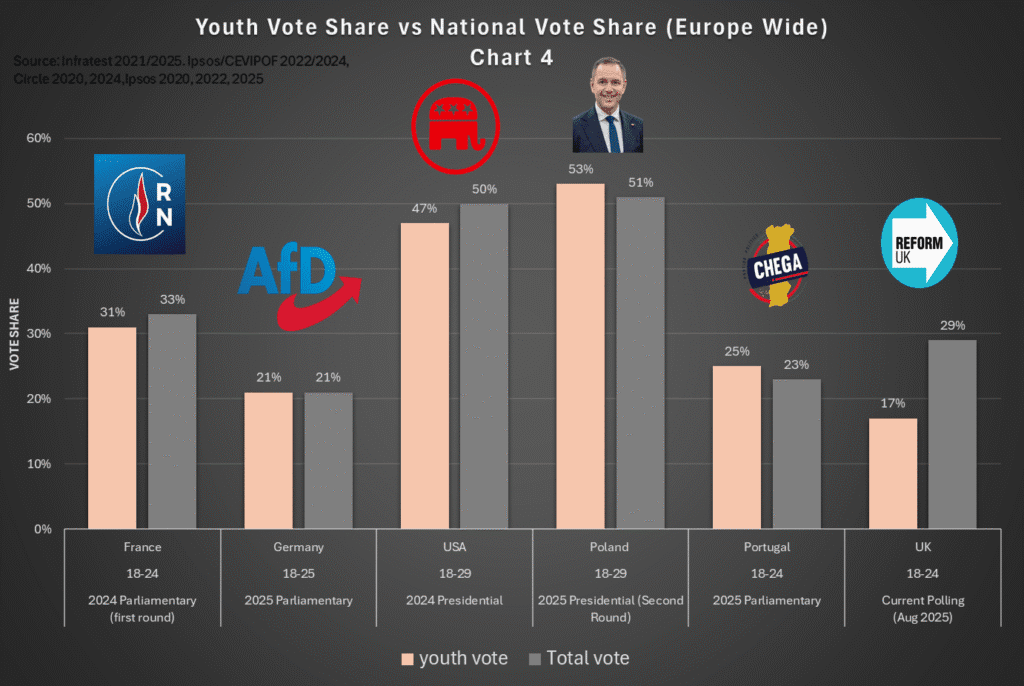

Part 3: Is there a gender divide in youth support for Reform?
Another important variable in youth support is the role of gender. Many recent elections have shown big gender divides among the youth. For example, Donald Trump received 56 per cent of the 18-29 male vote but only 41 per cent of the 18-29 female vote.
However, the picture is not uniform, and other countries have had far smaller and perhaps insignificant gender divides. France, for example, 31 per cent of 18-24 men and 33 per cent of 18-24 women voted for Rassemblement national(RN).
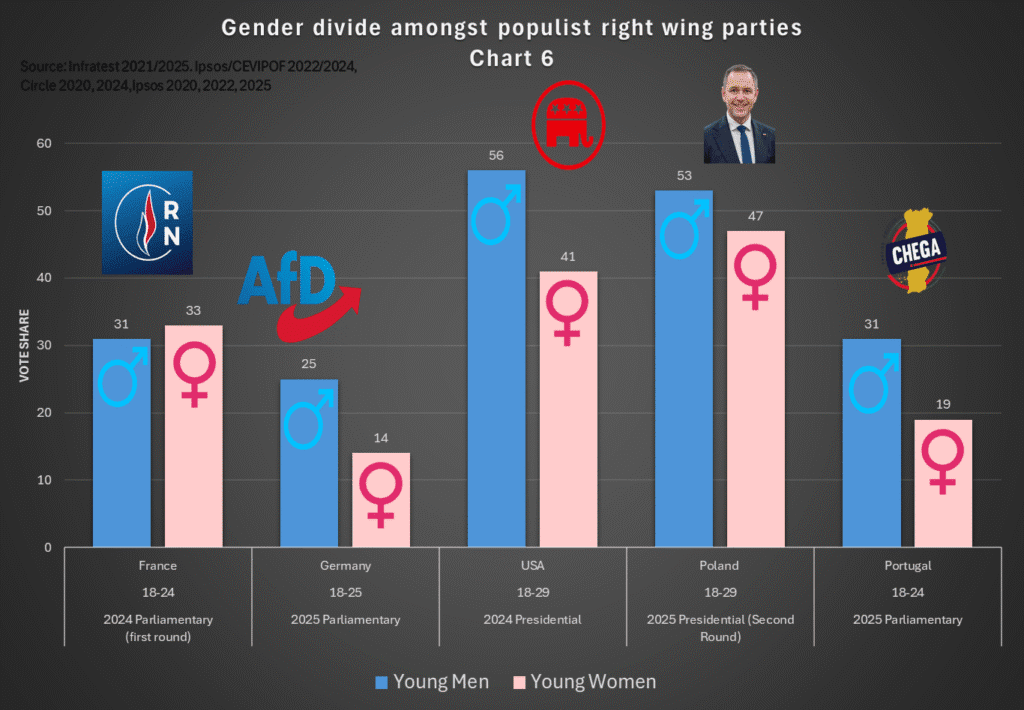
So, is Reform UK youth support particularly polarised by gender? Unfortunately, the answer to this question is incomplete, as open source polling data that breaks down youth support by gender is minimal.
However, from the small amount of open polling data there is on this question in the UK, I can draw two broad conclusions.
First a gender divide absolutely exists. Every post-2024 election survey (Ipsos, YouGov, Focaldata, British election study) had young men being more likely to vote for Reform than young women.
This trend has continued through Reform’s rise as seen through an aggregation of more in common polling in December 2024, and July 2025. Both show that Reform polls better with young men.
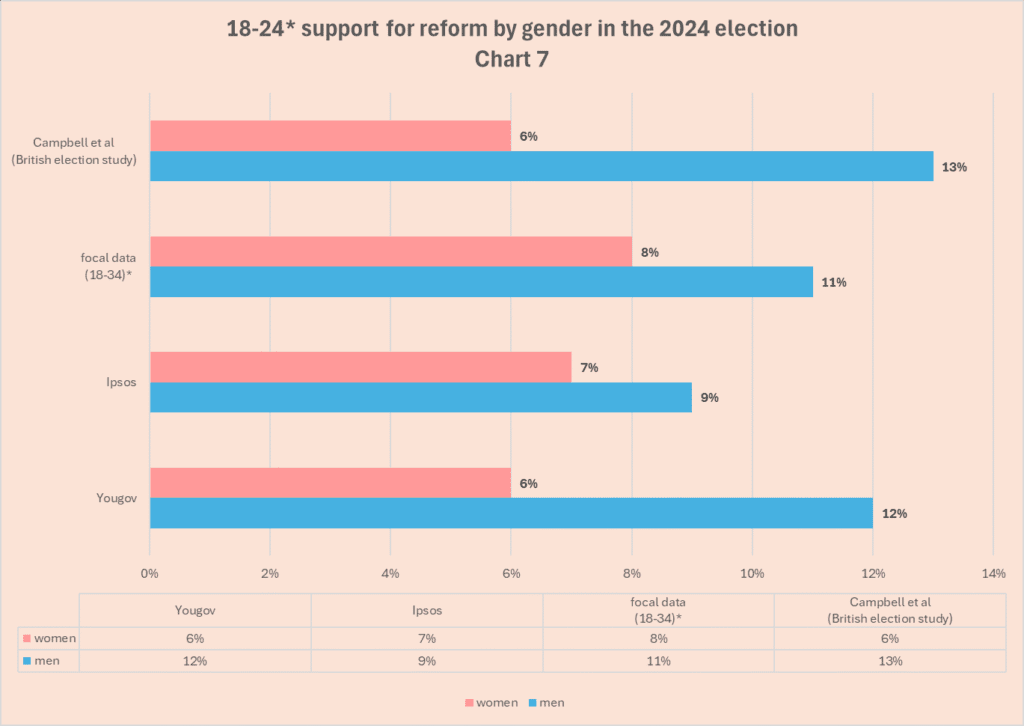
However, the data on the scale of this divide is less conclusive. The 2024 post-election survey results from Ipsos and Focaldata show relatively small gaps in gendered support (of 1 per cent and 3 per cent percent respectively), while the YouGov and BES study data show more substantive male surpluses of 6 per cent and 7 per cent respectively.
The More In Common polling data from December 2024 shows a male surplus of only 2 per cent and the data from August 2025 shows that men have shifted 6 points towards Reform since the 2024 election, while women have only shifted 3 points.
While party polarization data is inconclusive, data on youth opinion towards the most significant policy that fuels populist right support – namely, immigration – gives credence to their being a bigger gender divide among the youth.
Data from the Financial Times shows young women are around 10 points less likely to agree with the statement “Immigration undermines Britain’s cultural life” than young men, and data from the 2024 British election study shows that men were more than twice as likely (13 per cent vs 6 per cent) to list immigration as a top issue.
Right now, the significance of gender on youth support for the populist right is mixed, and the data is limited. If any conclusions can be drawn, it is that the populist right is more popular among young men than young women (although the scale to which this is true is highly uncertain) and that young men hold more conservative views on immigration.
A wider youth trend—The populist left
There’s another youth trend in the UK that gets far less attention: The growing strength of the populist left, especially with young women.
The Green Party—Britain’s (current) main left-wing populist force—has been gaining ground nationally and currently is polling at a historic high of ~10 per cent. As opposed to Reform, the Green Party’s rise really has been spearheaded by the young, polling at ~23 per cent with 18-24 year olds.
Moreover, youth gender polarization is an even more significant story of the Green party’s rise – More in Common polling (July 2025) shows women have moved 15 points toward the Greens since the 2024 election, compared to just 2 points for men.
This is even more significant when you consider that they already overperformed with women in the 2024 election; according to both YouGov’s post-election survey (23 per cent with young women vs. 12 per cent with young men) and the British election study (20 per cent of young women vs 13 per cent young men).
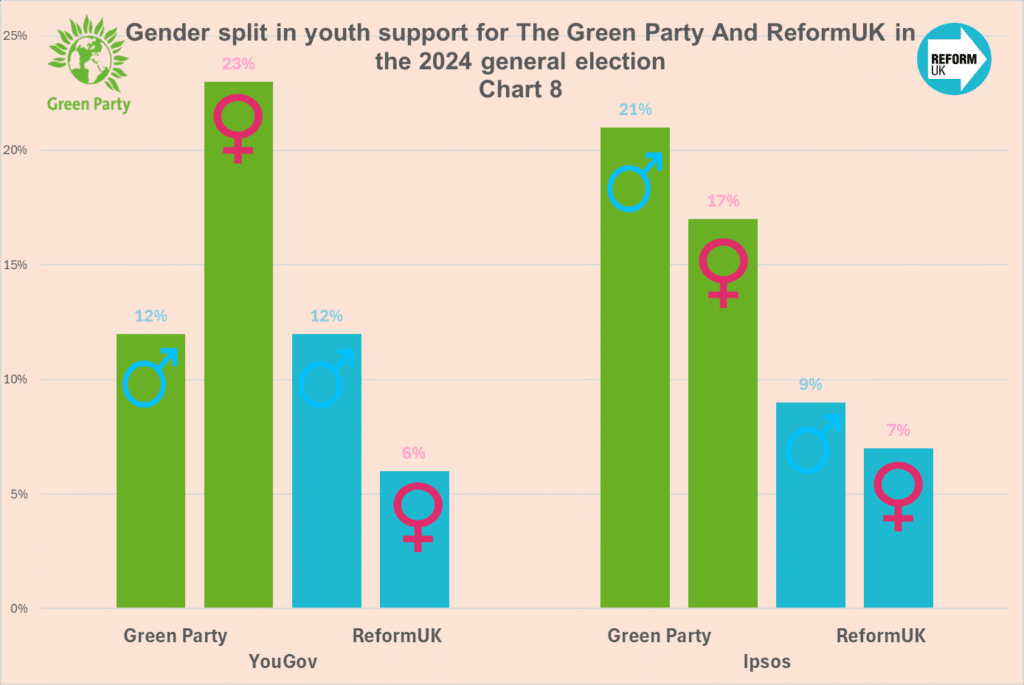
While there is some outlier data (such as Ipsos’s post-election survey which found the Greens doing better with young men) the vast majority of the data points to young people (and young women especially) moving to the populist left at a much higher rate than young men are moving to the populist right.
Final thought
Reform UK’s youth support is complicated. On one hand, it’s at historic domestic highs. On the other, it lags far behind European and American populist right parties—and even behind the UK’s own populist left among young voters.
Much of this analysis is based on limited public data, especially on gender. Bigger, more detailed surveys are needed to understand which young people support which parties—and why.
So, while Reform’s rise isn’t mainly a youth story, young voters aren’t irrelevant either. Youth political support is in a volatile state, continent wide and populist right movements elsewhere have shown that young people can be brought into the coalition.
With Reform currently polling on the knife-edge of a majority, their ability to engender support from the youth (especially considering the franchise has been extended to 16 year olds) will be decisive in their ability to form a majority government come the next election.
Featured image via ComposedPix / Shutterstock.

